Jennifer Julander's Blog, page 2
March 7, 2019
“Write What You Know” and Other Terrible Writing Advice
Writing advice abounds on the internet. But as with all things online, you can’t believe everything you read.
When looking for writing advice, I strongly recommend taking every piece of advice with a grain of salt. Your writing will differ from everyone else’s in the entire world, and you need to do what works best for your story.
That said, there is wisdom in knowing the “rules” of writing and why the exist. That way, you’re choosing whether to follow a rule for a specific reason, not just writing blindly.
And now, I present my rant on the most terrible writing advice I’ve seen plastered (seemingly everywhere) online.

1.“Write What You Know”
I can’t tell you how many times I’ve
heard writers say you must write what you know, and nothing else.
This is ridiculous.
Yes, you’ll naturally be drawn to write what you know. And if you aren’t already writing something that moves you, something that reflects the core of who you are, you’re doing it wrong.
But that’s as far as I allow the
definition of “write what you know” to influence my writing
decisions.
I’ve written plenty of stuff I know
nothing about. It takes longer
to write this way, because it involves research. But I’ve learned
some amazing things and found inspiration in learning itself.
And realistically,
what I know is pretty limited.
There’s a lot of criticism these days about the lack of diversity in literature.
This seems to me evidence that hordes of writers are sticking to “what they know.” Maybe that’s why they (and even I) have remained in keeping with “typical” conventions, particularly in fantasy literature.
And
you know what? I agree that the same old societal structures can
become boring. It’s time to break away from that in literature.
Start
writing what you don’t
know.
Learn something. Diversify.
(And please forgive me if my next 3 novels are too “typical” in their settings and societal structures. I have to finish what I started).
2. Read Everything You Can Get Your Hands On
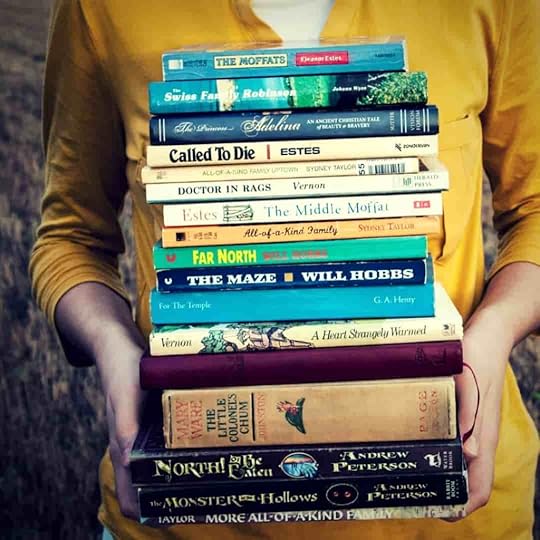
Oh, come on. Read everything?
Writers should read, and read a lot. But nobody has time to read everything–nor is it advisable to read anything and everything you come across.
One of my favorite authors, Michael Moorcock, says writers should “read everything you can lay hands on.”
But Moorcock also goes on to say, “read everything… from Bunyan to Byatt,” implying he doesn’t recommend reading every book in existence, at random and without a strategy.
Instead, he seems
to recommend reading books of quality, and a diverse selection at
that.
“Stop reading
everything in your genre,” says Moorcock.
Personally, I found this point surprising at first. Then, I thought about the times I’ve experience writer’s block and started reading for inspiration.
I didn’t read Lord of the Rings, or King Arthur books, or anything that took place in a world with a similar setting to my own WIP’s.
I didn’t even read high fantasy, which is basically what I’ve been writing for the past… forever… years of my life. I did read fantasy, because that’s my jam. But I read contemporary fantasy, urban fantasy.
I looked for authors who wrote in ways that made my jaw drop. Some random, non-fantasy fiction from the library even made its way into my hands during one particularly difficult bout of writer’s block.
But what was my
criteria for reading these books?
When I’m
experiencing writer’s block, I look for books that inspire me. Books
that get to the heart of why I write.
If I’m reading to improve my writing skills, I do exactly what Moorcock said. I read renowned literature. Bestsellers. I look for literature that has impacted the lives of thousands, because that’s the kind of book I want to write.
When I read these
books, I do so with purpose. Sometimes, if I’m pressed for time, I
watch movies or TV shows instead.
(Heresy, I know).
But I do it for a reason, and that reason is to remind myself about what makes a story tick, which aspects of plot development I find the most engaging.
And it works.
I could go on for hours about how to read with purpose, for inspiration, and in a way that helps you write better. (See also: 10 Hacks for Overcoming Writer’s Block).
3. You must write 1,000 pages before you can write one good page

College professors told us this, and
for a long time, I believed it.
I mean, to be fair, you do have to write a lot before your writing will improve. But there’s a difference between improving your technique and assuming your writing is terrible because you haven’t written 1,000 pages yet.
I look back on what I wrote in high school, and yes, it’s a far cry from what I’d consider worth publishing now. But what I wrote back then was leagues ahead of most people my age. (Humble, aren’t I?) I’ve always been a good writer, and the comments teachers left on my homework are proof of that.
It’s important to recognize your own
skill and celebrate it.
Don’t let people tell you that you
aren’t a good writer because you haven’t written “enough.”
Do you know how many people in this world are incapable of writing a cohesive sentence? (If you need evidence of this, look no farther than social media).
You are a good writer. Believe in yourself and work hard, and you’ll be as fantastic as you want to be.
4. Avoid purple prose

Ok, I guess I don’t really have to disprove this one because Writing Excuses has done it for me.
Yes, I’ve talked about the Writing Excuses podcast on my blog before, and I will probably keep talking about it. (You can’t stop me. It’s in my brain now, intertwined with all my thoughts the same way Aubrey from In the Forests of the Night and Lestat used to banter with one another in my imagination. “Used to.” Yeah…)
Honestly, I had no idea what the heck purple prose even was until they talked about it on Writing Excuses. But I immediately understood what they meant.
You know, when
people use over-the-top descriptions for mundane things, and it just
makes you cringe?
None of us have ever been guilty of
that, right?
Reality check: everyone has written purple prose at one time or another. It’s all part of the process.
The phrase “purple prose” comes from medeival times, when people used to wear splashes of purple to show off their wealth. The more purple you could afford, the richer you were.
Writers who throw
splashes of rich, eloquent text into the midst of plainer
descriptions are often accused of purple prose.
I loved Brandon Sanderson’s definition
of purple prose, not as “bad” prose, but rather, prose which
stands out from the rest of the text with such contrast that it seems
out of place.
He actually recommended, if you notice
purple prose in your writing, to elevate the rest
of your writing to that level of description and eloquence, rather
than “dumbing down” the empurpled section.
So, purple, eloquent prose writers, be free! (As long as most of your text is purple).
5. Never write a Mary Sue

I heard this “rule” for the first
time at a writing conference. Out loud, in the middle of a panel
discussion, I said, “A what?”
A nice poet leaned over to me and said, “A Mary Sue is writing yourself as the main character.”
“Oh,” I said, frowning.
Inside,
my brain was saying, Isn’t that everything I’ve ever
written?! Isn’t that what I’m about to publish?!
I could’ve gone wallowing in despair,
lamenting my failure as an author. I could’ve chosen not to publish
Green Lady, for fear I’d just
committed some cardinal sin of writing.
But here’s the
thing.
Even as I was
sitting there in the audience, frowning over this “rule,”
something struck me as odd.
Yes, my main character is an embodiment of who I might be if I were a princess living in a medieval universe where magic exists. But she’s not me.
There’s no way, in
real life, that I would be sleeping in the bug-infested wild, risking
my life leaping through the treetops, or running around barefoot in
the woods all day (okay, maybe that last one).
And
there’s certainly no way I would trust a random shapeshifter who’d
clearly been stalking
me (for reasons I won’t divulge because… spoilers!)
So the concept of a
Mary Sue just defies reason, if you ask me.
Some
writers define
a Mary Sue as “a character the author identifies with so
strongly that the story is warped by it.”
This, I can see. Anything that turns your story into a soapbox is guaranteed to disappoint.
But unless you’re
literally writing your life’s story, set in the real world, fact for
fact, your character will never truly be you.
(And if you are writing your life’s story, I think you’ll soon find that authors struggle to convey who they are without adding a bit of fiction to their story. Just ask Hemingway).
At that same
writing conference, I also attended a presentation on the psychology
of personalities. I then proceeded to take the Meyers-Briggs
personality test, not only for myself, but for every single one of my
characters.
If you’re
interested to find out, I’m an ENFJ, a personality type that I share
with only 2% of the world’s population.
Turns out, I scored a perfect 50/50 split between being introverted and extraverted. (This explains why I don’t seem to understand the concept of being introverted or extraverted). Thus, I am also an INFJ. (I’m a super-rare enigma, guys. Watch out. I’m a chameleon!)
I was also fascinated to find out that my suspicion about Mary Sues was correct.
None
of my characters were an ENFJ or an INFJ. However, every
single one of them reflected an aspect
of my personality.
That’s right. Every single character in my story reflects a small part of my subconscious. Surprise!
If
you’ve read Green Lady, you
may find it entertaining to learn my characters’ personality types. I
wrote a separate blog post about it here.
If you
haven’t read Green Lady,
you may still find it interesting to delve into personality
development. (I sure did).
Also,
if you haven’t read Green Lady…
get on it, yo! (Shameless plug). People have said it fills them “with
intrigue and awe,” makes you “envision nature as a powerful
divinity,” and that it’s like “simultaneously exploring a new
world and revisiting a familiar childhood haunt.”
And if you’ve ever
wondered just how much your subconscious will be on display
throughout your writing, there’s your answer, in the quotes above.
This book was, in fact, inspired by my wish to revisit a “familiar
childhood haunt.”
Which is exactly why I have a Mary Sue.*shakes fist at sky*
6. Follow the rules of writing to the letter (haha, get it?)
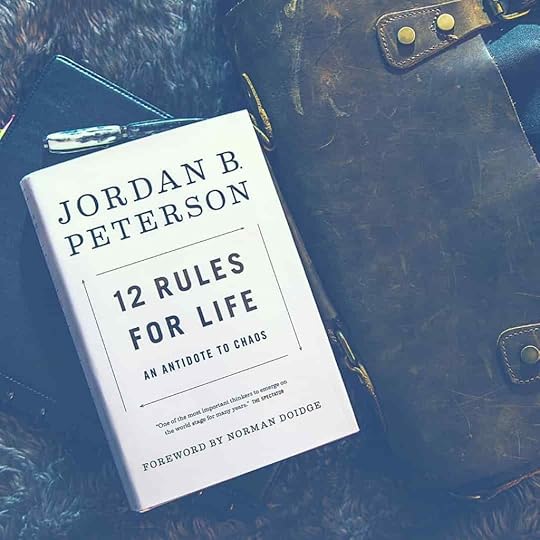
Don’t get me wrong, rules exist for a
reason. Sometimes, the reasons are pretty big.
If you don’t know what some of these rules are or why they exist, well. Edumacate yourself.
Once you know why the rules exist, you
understand how to break them. Strategically.
For example, one of my biggest pet
peeves is the rule “never use alliteration in prose.”
“Avoid alliteration always,” they
say.
But for me, it’s more like, “Apply some alliteration, already!”
One rule I will always follow, 100% of
the time, (I’ll get back to the alliteration thing in a second) is to
never do anything that pulls the reader out of the story.
Any “rule” you break, whether it be
radical conversation tags or excessive use of exclamation marks, if
it distracts the reader from the story, it’s bad.
Bad writer. Bad.
But, that said, I’ve seen writers pull
these things off effectively and still cultivate an audience of
dedicated fans.
It’s all about why you’re doing what
you do.
I use alliteration quite frequently in
Green Lady, and it doesn’t (I
hope) pull the reader out of the story.
(If I’m wrong,
please tell me so I can go smack myself on the head with a rolled-up
newspaper and question all of my life choices. But even my editor
didn’t push back on my use of alliteration, so I think I’m safe).
To understand why I
can successfully use alliteration in my novel, you first have to
understand the purpose of alliteration.
Alliteration does
many things. The sound of successive consonants can create rhythms
and add flavor to the text. Sounds, just like words, have
connotations. You can use alliteration to develop a mood, or an aura
so to speak, for a given scene.
You can use
contrasting sounds to influence the reader’s perceptions or support
what’s happening in your scene.
You can even use
alliteration for personification. “S” sounds can echo the
whispering of trees when characters are sneaking through the woods.
Harsher sounds can built tension or establish the mood of a fight.
But,
similar to rhyming, alliteration also causes the reader to
hyper-focus on the sound of
the text.
This is why I
expect the phrase “avoid alliteration always” has become common
wisdom in the writing world.
Alliteration really
is a double-edged sword. Imagine:
Your prose has been
going along fine, maintaining a certain rhythm, but then you suddenly
start using strange sounds and change the chosen rhythm with
concurrent consonants, causing confusion, confronting your reader
with curiously-focused description…
Your reader will
probably lose their place and struggle to read the sentence.
Alliteration defies
the way people speak. It has the potential to create new, interesting
sounds, but when used in the wrong place, can interrupt the reader’s
experience and draw their attention away from the story itself.
Which, as I
mentioned, is the only rule I think writers truly need to abide by
100% of the time.
(There’s probably
an exception for that, too. But I bet you it’s rare).
I,
personally, love using alliteration to draw the reader’s attention to
a particular description. Half the purpose of Green Lady
was to bring to life a world I loved as a child—half-real, half
fantasy.
Thus, I need
readers to pause or slow down during certain descriptions, because
they’re feeling a sense of awe in discovering this world. The impact
is better if they have time to savor it.
My hope is that my
use of alliteration achieves that affect. I’ve been told that my
descriptions of the forest and the world are rich and beautiful,
poetic. That’s exactly what I was going for.
I
doubt I evenknew why
I was using alliteration when I wrote those scenes. All I knew was
that it felt right.
So, if
you want to break a rule, break it. Just use your intuition to do
what feels right for your story. And if you fail miserably, just
smack yourself on the head with a rolled-up newspaper and say, “Bad
writer! Bad!”
(No really, that’s proven methodology).
7. Build Your Audience Now, Now, Now!

Um, right. So, how exactly am I supposed to build an audience if I don’t have anything to give them yet?
Even I don’t have all the time in the world. Like many authors and self-starters out there, I work a full-time job, with writing as my side hustle.
I’d love nothing more than to be able to produce endless free ebooks, free downloads, and all kinds of other value content goodies for my readers.
But time can be a real struggle. On top
of working full-time and writing long
fantasy novels, I’m a mother of 2 young boys. I run a local writing
group and manage my own website. I produce my own web content, work
with contractors on book cover design, hire my own editor, create my
own messaging, fill my own orders, format my own books, manage my own
finances, schedule my own appearances…
Heck, I even DIY my
own furniture.
My time is split in
so many directions!
Even I have to take a break and binge watch Asian TV dramas on Netflix now and again. 
March 1, 2019
Write 2,000 Words a Day for NaNoWriMo
Want to write 2,000 words a day? I have good news: it’s not impossible, even if you’re a beginner.
Camp NaNoWriMo is just around the corner, and many writers are gearing up for this year’s first bout of writing insanity. Whether you’re just joining the April NaNoWriMo for inspiration, or you’re joining the thousands of writers who share a word count goal of 50,000 words in a month, you’re not alone.
I successfully completed NaNoWriMo in November 2015, when I was drafting Green Lady. The novel was already written, but I wanted to add depth to many of the character perspectives. I compiled a list of scenes I wanted to write and I set a word count goal of 1,666 words/ day.
Despite being the mother of a one-year-old and eleven months pregnant with my second child, I overshot my word count goal and ended up with 60,500+ words. This means I was writing over 2,000 words per day.
How did I do it? Well, I’ll tell you this: It was no walk in the park. I haven’t joined the NaNo frenzy since, but I have set some pretty intense writing goals and done this in smaller portions several times since.
1. Map your novel to ensure you’re able to write quickly
 Before you say, “I’m a discovery writer, I don’t plot my stories,” know that I am not a plotter. So, from one pantser to another: Before you can write at the speed of 2,000 words/ hour, you must know what you’ll be writing.
Before you say, “I’m a discovery writer, I don’t plot my stories,” know that I am not a plotter. So, from one pantser to another: Before you can write at the speed of 2,000 words/ hour, you must know what you’ll be writing.
You don’t have to know every single word or connecting point, but you do need to know what’s driving your plot. Where are your characters going and what gets them there? What are your major scenes? What do you want the reader to feel? How is the major conflict resolved?
Having these answers will help things fall into place as you write.
If you’re new to plotting and outlining, try creating a mind map. Just spend an hour or so mapping everything you know about your book. Once you have it all out in front of you, turn it into a bulleted outline.
If you’re anything like me, there’s a strong possibility your outline will evolve as you get deeper into the novel. This is totally fine, but keeping an outline on hand throughout the drafting process will give you something to refer back to, especially if you get writer’s block.
See also: 11 Fail-Proof Methods for Plotting a Novel
2. Research beforehand so you can stay on top of your word count goals
 Mapping your novel ahead of time will help you pinpoint what you’ll need to research. Think: weapons, clothing, period-specific technology, mannerisms, available building materials and resources, etc.
Mapping your novel ahead of time will help you pinpoint what you’ll need to research. Think: weapons, clothing, period-specific technology, mannerisms, available building materials and resources, etc.
Don’t spend an eternity on research. But do, by all means, pinpoint things that tie in directly to the main plot.
For example, there’s a time-travel steampunk fae novel in my future. I started writing the beginning, but soon realized I’m terrible at history (I know what happened, of course, but not the exact dates). The fact is, I’ll have to do some extensive research on Victorian times, and possibly many other time periods as well, before I can really start writing.
If you’re like me, you may feel you won’t know what you need to research until you’re elbows-deep into your draft. That’s okay, and if that’s what works for you, then roll with it.
However, for the purposes of NaNoWriMo, I highly recommend writing yourself a note when you encounter something you need to research. Personally, I use brackets and a glaring red highlight so I can come back to my notes later on.
For example:
[RESEARCH: When electricity became common in homes in Victorian England? Depending on findings, the character will either strike a match to light a gas lamp, or turn on an electric lamp].
And I leave it at that. This detail isn’t integral to the plot. It doesn’t really change anything. Readers of Victorian literature will notice the little details, so I’ll get it right for them. But first I need to focus on the plot itself.
Add notes to your manuscript however you prefer. I like the big, glaring notes because I can’t ignore them.
The main point is to free up time, keep yourself from dwelling on things that can wait, and get your story onto paper as fast as possible.
This is one of the biggest benefits to NaNoWriMo: the faster you can get your story written, the more consistency it will have.
You won’t have to backtrack and figure out what this one character said in a previous scene, because you wrote it just a week or two ago. Additionally, those moments of epiphany will be fresh in your mind and more likely to make it onto paper before you forget them.
3. Create reference cards so you can write without stopping
 Character reference cards are a fantastic way to set yourself up for success. I think of these as a miniature, portable version of a storyboard.
Character reference cards are a fantastic way to set yourself up for success. I think of these as a miniature, portable version of a storyboard.
Particularly if you haven’t been working on your novel in a while, or if it’s brand-new to you, these cards can be a lifesaver during your writing spree.
You can create reference cards for characters, weapons, settings, myths, creature attributes, technology, or the rules of magic.
These cards are designed to outline important story traits that will help you drive the plot.
Similar to not spending too much time on research, don’t run off and create a 1,000 card deck of cards. For one thing, you need the cards to be useful, and if you have too many, they’ll be difficult to use/ find.
But do consider one card for each main character that includes brief descriptions of the following:
False belief
Personal goal, what they will try to achieve no matter what the main conflict brings
Attributes, strengths, limitations
Flaws and obstacles
Physical mannerisms, common gestures
Other hyper-specific details that might be relevant to the plot (for example, if your character is a shapeshifter, what happens to their clothes when they change form?)
Remind yourself over and over that every details should be integral to the plot–it’ll help you later on.
You could also create cards with setting attributes you want to remember later.
Or, cards for specific scenes, outlining a big reveal or a series of important events. If you use scene cards, you could consider starting with the last scene and working backward to outline where you’ll work in foreshadowing.
I recommend having no more than 10-30 reference cards depending on the size of your book. Depending on where you write, you could even stick them to a magnet board right above your desk for easy reference
4. Set your word count goal. 2,000 words per day easily surpasses the NaNoWriMo goal, but is it reasonable?
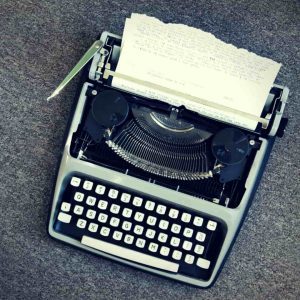 Most people aim to write 50,000 words during NaNoWriMo. If you’re new to word count goals, that’s roughly 250 pages, or 8.33 pages per day.
Most people aim to write 50,000 words during NaNoWriMo. If you’re new to word count goals, that’s roughly 250 pages, or 8.33 pages per day.
Now, you must be somewhat confident that you can write this much, or you wouldn’t be here. As a writer who’s been tracking word count for years now, I can tell you it takes time to work up to this type of output.
That’s not to say you can’t do it if you’re a newbie. But I strongly recommend getting handle on your current writing speed. Nothing is more discouraging than setting a word count goal of 1,700 words per day, and realizing three days in that it takes you two hours to write that much.
The last thing you want in the middle of NaNoWriMo is to feel like you’ve failed. This could cause you to give up entirely!
Determining your actual writing speed will help you achieve your word count goal.
If it does take you two hours to write 1,700 words, that’s okay. The point is, it’s difficult to be successful at meeting your word count goal if you don’t know how long it will take you.
So sit down and write for an hour or so. Try to go at your top speed, and try not to stop and think while writing. After the hour is over, use the Word Count function in your document editor to see how many words you achieved. If it’s just 600 words, great. Don’t sweat it.
Do this for a week or two. Record your results each time you sit down to write, then at the end of the week, take an average.
This is your writing speed. You might think it looks dismal, but don’t worry. The more you practice increasing your speed, and the more tools you give yourself to prevent stopping in the middle of writing, the faster you’ll get.
Use your actual writing speed to set your NaNoWriMo word count goal.
Determining your average writing speed is vital to achieving your goal. If 600 words is truly your average output per hour, then you know what to expect of yourself.
You don’t need to feel like a failure if you only manage 600 words a day because you only have one hour to spend writing.
Instead, you need to decide: a) whether you can find a way to allocate 3 hours a day to writing; or b) whether you would be okay with a word count goal of 18,000 words instead.
Sure, if you lower your word count goal, you won’t get NaNo kudos for finishing, but you will have the satisfaction of knowing you met your goal and practiced writing as much as you could every day. If you practice this consistently over time, you can steadily increase your goal to 700 words/ hour, then 800, 900, etc.
It’s also important to realize your stamina will wane over time. I’ve gone on writing retreats and poured out 2,000 words an hour for 10 hours, only to fail to even write 1,000 words an hour the next morning. Be kind to yourself when this happens.
The numbers matter less than the act of writing itself. Far more important than word count is the time you spend immersing yourself in your novel.
5. Practice hitting a smaller word count goal NOW
 There’s still time to practice hitting a word count goal before NaNo! Now, don’t burn yourself out. It’s going to be a long month if you’re trying to achieve 50,000 words.
There’s still time to practice hitting a word count goal before NaNo! Now, don’t burn yourself out. It’s going to be a long month if you’re trying to achieve 50,000 words.
That said, there’s no harm in practicing a routine. I personally find that I do better at a writing retreat if I spend the weeks leading up to the retreat practicing hitting a smaller word count goal.
Make your goal achievable, something you know you can hit no matter what. You might even consider making your goal as small as one word per day. As ridiculous as this sounds, you’ll never write just one word. This goal practically guarantees you’ll start upping your word count.
6. Choose a productive setting that will help you focus on writing
 A disciplined writer can write anywhere. That said, for something like NaNoWriMo, the best strategy is to purposefully write in a setting that helps you be productive.
A disciplined writer can write anywhere. That said, for something like NaNoWriMo, the best strategy is to purposefully write in a setting that helps you be productive.
Many writers find coffee shops conducive to writing, perhaps due to the combination of white noise and caffeine. Whether it’s a public place or your own private office, think of different places where you’ve felt the most productive.
Since NaNoWriMo is 30 days long, you’ll want to come up with a variety of choices. Chances are, you’ll end up writing in different locations throughout the month.
If possible, try to create your ideal writing space, where you can write the majority of the time. That could mean printing out some inspirational photos of your world ideas and putting them on the wall above your desk. Or, it could simply mean packing a bag with everything you want with you when you go out of the house to write.
Whatever it is, make a plan and stick to it. Consistency will help you meet your NaNoWriMo goal.
7. Create a schedule & meal plan in advance so you can spend more time writing
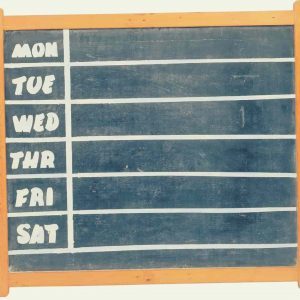 Now that you know where you’ll be going to write, take a good look at your schedule and think about where you can fit in writing time. It’s a good idea to identify multiple times of day when writing could happen.
Now that you know where you’ll be going to write, take a good look at your schedule and think about where you can fit in writing time. It’s a good idea to identify multiple times of day when writing could happen.
Especially if you’re anything like me, it’s easy for one small thing to throw off your schedule. If you’ve thought of alternatives ahead of time, you’ll be more likely to still find time to write when this happens.
Here’s a schedule I’ve been using lately. Now, before you call me crazy, I don’t necessarily wake myself up at 7 AM every Saturday (trust me, I love sleeping in).
But I know that if I do wake up that early one week, it presents a huge opportunity to get a lot of writing done before my kids wake up. This gives me motivation to get enough sleep during the week so I can fit in time to write.
Mon
Tues
Wed
Thurs
Fri
Sat
6 AM
Wake up
Wake up
Wake up
Wake up
Wake up
7 AM
Write
Write
Write
Write
Write
Wake up
8 AM
Breakfast
Breakfast
Breakfast
Breakfast
Breakfast
Write
9 AM
Play with Kids
Play with Kids
Play with Kids
Play with Kids
Play with Kids
Breakfast
Writing out a schedule like this might seem tedious, but allowing yourself time to really sit down and think through your habits will help you have a more successful NaNoWriMo.
When I did this, I realized I was wasting a lot of time watching Netflix and playing games on my phone. Now, I have allocated time for that on the weekends only. Writing out this schedule helped me see how little time I truly have during the week for things like watching TV.
Meal prep helps you save time and frees up space in your brain so you can achieve 2,000 words per day.
I also strongly recommend doing your meal planning in advance. If you can, plan out the entire month. If you have it in you to prep and freeze a whole month’s worth of food, even better (this will take you an entire day).
Getting small logistical stuff out of the way can be a huge lifesaver and frees up a lot of time for writing. Just take a look at my own schedule–I give myself 30 minutes to an hour every night to cook dinner. If I prepped all my meals in advance, I’d be giving myself a lot more time.
8. Pull out your bag of writing tricks and bring out the “muse bait”
 Ah, the ever-elusive muse. We all have one, whether you envision Calliope standing over your shoulder, or whether it’s just a feeling you get when you write.
Ah, the ever-elusive muse. We all have one, whether you envision Calliope standing over your shoulder, or whether it’s just a feeling you get when you write.
If you’ve been writing long enough, you know there are certain factors that awaken that feeling within you. For me, it can be a variety of factors, but I’ve noticed I’m more likely to start writing with a hot beverage in front of me (even if I never drink it).
Many of these factors probably stem from your habits. For me, I spent a lot of time writing at a local coffee shop in college, because it was just an amazing place. The environment itself inspired me, from the artwork on the walls to the random bongo player who became a staple of my writing nights.
I’ve also noticed that listening to music isn’t enough for me sometimes. It’s usually best if I have headphones in. There’s something about literally plugging myself in that makes me feel more cut off from the world and helps me get in the zone faster.
Think about what factors play into bringing out your muse. Now’s the time to write them all down. And on April 1st, pull out all the stops! There’s no reason not to use every single thing you can think of to make it easier to start writing.
9. Eliminate distractions that could hurt your daily word count
 We are all guilty of succumbing to distraction. Heck, I’m doing it right now–instead of editing, I’m finishing this post. (I’ll edit today, though, cross my heart).
We are all guilty of succumbing to distraction. Heck, I’m doing it right now–instead of editing, I’m finishing this post. (I’ll edit today, though, cross my heart).
I tend to stream music online when I write. I make it my personal rule to only allow two tabs open at a time– Pandora & Thesaurus.com. As I mentioned above, I don’t let myself fall into the research trap while drafting, unless the plot absolutely cannot be written without said research (this is pretty rare, especially if you spend time researching before drafting).
Sometimes, even I fail to follow my own rules and succumb to distractions. Maybe it’s because I remembered in the middle of writing that I need to send an update to my writing group, or maybe I remembered some random, urgent business need. Or something completely unrelated to writing, like forgetting a birthday party that’s coming up the next day.
This is when it becomes really useful to use an app like Write or Die. I started using this in the browser, but eventually bought the paid version. It’s totally worth the $20 I spent, and it’s become my secret writing weapon.
This is how I achieve 2,000 words an hour.
Not 2,000 words per day. Per hour.
Write or Die has different settings that allow you to really focus on your work. You can make it fullscreen, change the background color and text color, and adjust the background noise. The app allows you to set a word count goal and a timer, and then you just go.
I’m not some superhuman. I don’t have Flash-speed fingers (though sometimes I wish I did, as it often seems my fingers can’t keep up with my brain).
But there’s something about this app that not only removes all distractions, but helps you remember not to spend time daydreaming about could-bes in your novel.
Maybe it’s because I’m a pantser, but I find this app really helps me hone in on what matters most in a given scene. Best of all, it helps me get my story out onto paper as fast as I can, improving my plot consistency and writing habits.
10. Write as if you already know you’ll surpass your word count goal
 Now that you’ve set yourself up for success, it’s time to write!
Now that you’ve set yourself up for success, it’s time to write!
Remember, your novel will not be perfect at the end of the month. No first draft ever is. By writing in such a high volume, you’re bound to encounter major plot difficulties. Just remember that this is 100% normal, and it’s actually a really good sign.
If you encounter writer’s block, don’t worry. There are plenty of strategies for overcoming a block within a matter of hours. You can find my best tips for writer’s block here.
Still have questions about meeting your NaNoWriMo goal?
<!DOCTYPE html>
Click here to
shoot me a message!
The post Write 2,000 Words a Day for NaNoWriMo appeared first on Jennifer Julander.
February 27, 2019
Behind the Scenes: Green Lady Photoshoot
When it came time to create the book cover for Green Lady, I knew exactly what I wanted on the cover. A young girl, who’s just discovered forest magic, peering through the forest, her eyes glimmering with discovery.
This was the image I pictured every time I thought of the front cover. However, I quickly found that the effect I wanted was challenging to create. I consider myself a decent artist. But no matter what I put on a canvas, I couldn’t quite achieve the effect I wanted for my book cover.
Fortunately for me, my sister-in-law, Emily, is an amazing photographer.
(Here are some pictures Emily has taken for our family, to give you an idea).
[image error]
[image error]
[image error]
When I approached Emily about helping me design a book cover, she was delighted. Normally, her work is centered around newborn and family photography, and she said it’d be fun to work on something different.
Finding a Model
Photoshoots require subjects. Though my character, Cleandra, is very much like me, she is not me. I really didn’t want to put my own face on the cover (though for some reason, people kept asking me if this was my plan). At first, Emily put out queries for a model, but we didn’t have much luck finding someone who fit the bill.
Then, it hit me. My childhood friend, Sasha, was my biggest fan growing up. She’s four years younger than me, but that never stopped us from being friends. When we were kids, she would rush over to my house every day after school to read what I’d written. We would dream of exploring the forest and discovering magic. Often, we discussed myriad plot twists and endings for my book.
[image error]
[image error]
Ironically, there is a character in Elodria modeled after Sasha. This character didn’t make it into Green Lady. I had a long debate over whether I should have Sasha model for Cleandra. Since Sasha had past modeling experience & she was so close to what I needed, I decided to go with it.
(Sasha’s character is a young girl named Gabriella. She may make an appearance in a later volume. No spoilers!) I wanted Gabriella to be part of Green Lady. Unfortunately, her story was too complex and it didn’t serve the main plot as much as I would’ve liked).
When I asked Sasha to model for the book cover, I could just see that 9-year-old girl again, jumping up and down and squealing on my front porch. I that moment, she was the ultimate fangirl, excited for my un-published book as though it was already a best-seller.
[image error]
Sasha (7) & me (12) at summer camp.
Little did I know just how perfectly, and how quickly, Sasha would capture the aura I wanted for my book cover.
Preparing for the Shoot
We hired a makeup artist and picked a location. We asked the makeup artist to paint the green veins that appear on Cleandra’s face in the novel. It turns out the effect was more convincing with the help of Photoshop. But it helped Sasha get into character, so it was well worth it.
We tried several different hairstyles before settling on a simple braid. In my mind, Cleandra never does her hair, so I never imagined her wearing such a neat braid. The moment on the cover must have been after some lady-in-waiting (aka, my sister-in-law who’s also a hairdresser) took it upon herself to fix the princess’s hair. 
February 7, 2019
5 Life-Changing Writing Apps for Authors
Writing apps can be a lifesaver for authors.
Especially if you’re like me, and you sometimes need a little push to avoid all the distractions that can keep you from writing, some of these writing apps really help.
For the record, this is not a sponsored post. No one has paid me to write this, and the opinions here are my own, from personal experience using these apps.
1. Write or Die

This is one of the most hardcore writing apps. Write or Die means business. Think of it as your personal writing drill sergeant.
Not only does the app have a fullscreen mode to help you avoid distractions, but it comes fully-equipped with motivational sounds and background images to help you achieve a high word count goal.
The dashboard allows you to set a custom timer and word count goal.
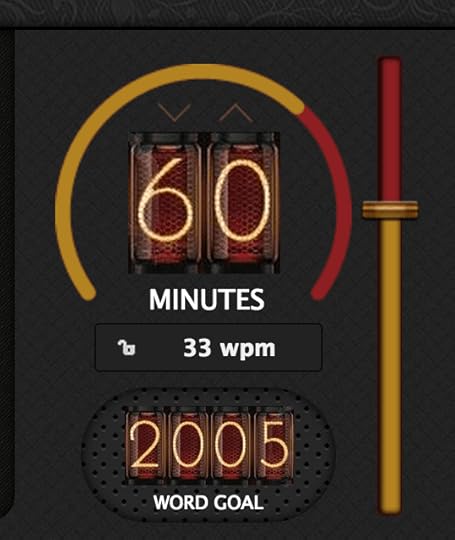
“Stimulus mode” is my preferred writing mode in this app. You can set ambiance sounds, such as ocean waves, and a background image. The “stimulus” only stays up as long as you keep writing.
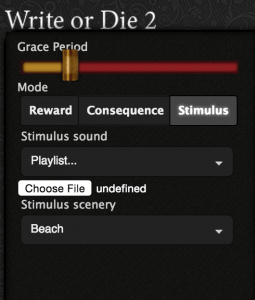
You can set a reward in “Reward Mode,” such as chimes that play every time you reach a word count milestone that you specify.

If you need a coach yelling over your shoulder to keep you writing, “consequence mode” might be more your style. This includes settings such as your screen changing color or Angry Cat appearing on the screen to glare at you if you stop writing. You can also set alarm bells and sirens to jog you out of your latest reverie.
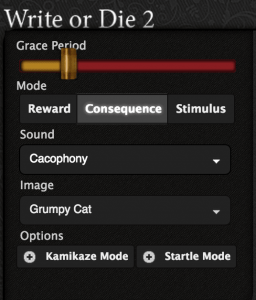
For the truly hardcore (those of you who really want a writing drill sergeant), this app also offers “Kamikaze Mode.” Kamikaze Mode deletes everything you’ve written if you stop writing for longer than the (adjustable) grace period. 
January 17, 2019
How to Find Time to Write in Your Busy Life
Life is busy. It’s easy to get stumped on how to find time to write in the face of everything else that you have to do. Especially if you work full-time (or if you’re a parent!), setting aside that precious time to focus on your writing can become a real challenge.
The older I get, the more I feel the pressure of other responsibilities trying to get in the way of my writing time. It’s easy to allow it to happen, and once you do, your carefully-maintained writing habits can quickly become a thing of the past.
However, there are also some tried-and-true strategies for maintaining that writing habit, even when life demands more from you.
1. Identify distractions that hold you back from writing.
 There are so many distractions in our world. Think about your daily habits. Do you come home and veg out on Netflix for 3 hours every night? Do you let yourself play Candy Crush even though you know it’s not productive?
There are so many distractions in our world. Think about your daily habits. Do you come home and veg out on Netflix for 3 hours every night? Do you let yourself play Candy Crush even though you know it’s not productive?
Now, I’m not saying you should cut these things out of your life entirely. Particularly if you spend time doing these things often, you’ll want to leave room to keep doing them. But give yourself a set time for these activities so they don’t encroach on your writing time.
When I write, I only allow myself to have two browser tabs (music & a thesaurus) and one writing program (Write or Die, or Open Office) open at a time. This helps me focus on the writing itself, and prevents me from getting distracted by other things.
Oh, and do yourself a favor. Turn off your phone during writing time, or at least put your phone on silent. You’ll thank yourself for it later!
2. Set aside dedicated time for writing and treat it like your day job.
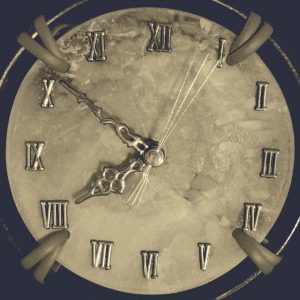 If you think you don’t have time to write, chances are you just aren’t making enough time.
If you think you don’t have time to write, chances are you just aren’t making enough time.
Jot down your daily habits in the form of a schedule. This will help you identify times when you could be writing instead of doing something else. Particularly once you’ve limited distractions, finding time to set aside for writing becomes easier.
Don’t stress about giving yourself huge chunks of time to write. Rather, try to find 30 minutes to an hour each day, or every other day, that you can dedicate to writing.
The point is to make this a regular habit, so try to make your goal realistic.
Once you’ve decided on a goal, stick to it like you would get fired from your job if you didn’t. Treating your writing habits like your day job will help you create a more regular routine.
3. Let go of the guilt and perfectionism that can stop you from writing.
 Do you ever think you’re not ready to start writing yet because it needs to be perfect and you’re just not there yet?
Do you ever think you’re not ready to start writing yet because it needs to be perfect and you’re just not there yet?
Or, do you stress out so much about the fact that you won’t meet your writing goal for the day, you just can’t bring yourself to even start writing?
Well, cut it out. I know it’s challenging to get past feeling like you shouldn’t even bother because it won’t be perfect, or you won’t meet your goals. But you have to stop guilting yourself into not writing.
Otherwise, you’ll never find time to write, because your time will be consumed with these worries.
Recognize that your writing will not be perfect the first time, or even the thousandth time. This is completely normal. It’s okay if it isn’t perfect today, or tomorrow, or even a year from now. But you won’t ever get there if you don’t get it onto paper first.
It’s also okay, and normal, to experience feelings of helplessness, frustration, and being lost in the writing process. Every writer on Earth has felt this, throughout all of time. It doesn’t mean you shouldn’t write.
4. Ask yourself why you’re doing this. Why is writing so important to you?
 If you just read Point #3 above, you may have already answered this for yourself.
If you just read Point #3 above, you may have already answered this for yourself.
Why are you doing this? Why do you want to write?
If it’s important enough, you’ll make time for it.
And if it’s that important to you, it’s not a bad idea to remind yourself why on a regular basis. Make yourself an inspiration board, or simply write it down and keep it on your fridge.
Whatever the method, remind yourself often why your writing matters. It can be motivating in those moments when you really don’t feel like making yourself write.
5. Create a routine to signal your brain it’s time to write.
 Many writers have a creative routine that helps them maintain regular writing habits.
Many writers have a creative routine that helps them maintain regular writing habits.
For me, making coffee and playing music helps me get into “writing mode.” I struggle to start writing without these factors, so I tend to carry headphones wherever I go. When I make writing pit stops, it’s often at a coffee shop, for this reason.
For others, it might be lighting a candle, or visualizing opening a “writing box” and closing the “everything else box.”
Think about your writing routine. Do you have one? How does it help you? How can you replicate the factors that help you write wherever you go?
If you don’t have a creative routine, think about the things that make you feel inspired. How can you incorporate those things into a daily routine to wake up your creative mind?
6. If you have kids, get creative about your writing habits and location to make more time.
 If your kids are anything like mine, they like to button-mash your keyboard instead of letting you write. They could be playing outside together, perfectly content, but the moment you open your laptop, it’s all “fjlfjejoijewoifowenfklw.”
If your kids are anything like mine, they like to button-mash your keyboard instead of letting you write. They could be playing outside together, perfectly content, but the moment you open your laptop, it’s all “fjlfjejoijewoifowenfklw.”
But you’re a parent, and if anyone is a master of distraction, it’s you.
I don’t do this as often as I used to, but when my kids were 2 and 3 years old, I used to take them to a restaurant with a PlayPlace a few days a week. I would bring my laptop and let my kids run wild where I could keep them corralled with minimal attention.
Of course, this only gave me an hour max to spend on writing, and some days my kids required more direct supervision. But it was a far cry from trying to get anything done at home, where the kids wanted non-stop attention from me.
I was always sure to reward them for good behavior, and I focused on spending extra time with the kids before and after the PlayPlace (otherwise, they wanted my attention at the PlayPlace, too).
If you don’t like fast food places (believe me, I don’t, but I learned to find the cleanest ones), there other options that offer this type of environment.
There’s even a coffee shop near me (ok, not so near me, or I would go there more often) that offers huge buckets of Legos and action figures for kids (and adults) to play with. The kids love going there while I write, and I’m usually able to write for at least an hour before they’re ready to leave.
7. Plan a business retreat to get in some extra writing time.
 While letting the kids play at a PlayPlace can help you find time to write, there’s something to be said for 100% focus on your writing.
While letting the kids play at a PlayPlace can help you find time to write, there’s something to be said for 100% focus on your writing.
Particularly if you have a big project (hello, revisions!), the value of uninterrupted writing time can’t be overstated.
Staying in a hotel is by far the easiest way to get some much-needed alone time with your book. But writing retreats don’t have to be expensive. Once, I scheduled a writing retreat for a single day.
I left my house at 7 am, (you might be saying “yuck,” but at the time I was working at 5:30 am every day, so 7 wasn’t bad), equipped with my laptop, charger, headphones, writing notebook, and plenty of pens. I also brought a thermos of coffee, some cucumber sandwiches (gotta keep it classy, guys), water, and plenty of snacks.
This particular retreat was spent in the Salt Lake City Library, which is eye-catching enough to inspire even the most stuck novelist. The plan was to sit on the rooftop garden to write, but unfortunately, it rained that day. Instead, I sat next to one of the library’s many fireplaces.
There’s even a Dunkin Doughnuts across the street from the library, so when I ran out of coffee, I just crossed the street and took a quick break. (I drink a lot of coffee, okay? Don’t judge me).
Writing retreats can last several days or several hours. I will say that I’ve been most effective when I schedule at least an entire day or two. I also find that I’m more productive when I’m feeling inspired (you know, when you feel like you can’t sit still at work because your brain’s about to burst?), but that’s just me. It’s up to you and what you can fit into your schedule.
8. Create extra time in your day to write by waking up early or staying up late.
 Yeah, yeah. The classic “successful people wake up at 4 am” garbage.
Yeah, yeah. The classic “successful people wake up at 4 am” garbage.
Truth: you don’t have to wake up at 4 am to be successful (J.K. Rowling says so).
But you do have to budget your time. Maybe you’re like me and you stay up until midnight watching Netflix on a weeknight when you know you shouldn’t.
Then, you roll out of bed and get to work on time (barely). You work, rush home, make dinner, do laundry, then collapse on the couch. At this point, your willpower is effectively gone, and you end up watching Netflix until midnight again.
Rinse and repeat.
It’s not that there isn’t time to write. It’s that you weren’t being mindful about how you spent your time.
Whenever I find myself wondering how to find time to write, I usually realize I haven’t been getting enough sleep. So, I start going to bed earlier and getting up earlier (not at 4 am though). I get my writing done first thing in the day, before I go to work (or, worst case, during my lunch break… which I’m able to do because I woke up early enough to take a lunch break).
It’s not that there’s any more or less time in my day than there was before. But suddenly, when I start budgeting my time toward the things that are most important, I’m able to find time to write again.
9. Planning ahead in other areas of your life helps you make enough time to write each day.
 Meal prep. Cleaning. Grocery shopping. Bills. One-time events.
Meal prep. Cleaning. Grocery shopping. Bills. One-time events.
All of these are factors that regularly get in the way of my writing time.
Some of this comes back to budgeting time again. Whenever I’m able to get on top of how I use my time, I also find myself scrutinizing the things on which I spend my time.
Meal prepping can make or break a week for me. It’s the difference between scrambling to get my lunches together in the morning, or casually walking out of my house at the last minute because everything is ready to go.
When I’m behind on cleaning, I struggle to focus on writing time. Often, I feel that I can’t start writing until the chores are caught up. Then, before I know it, my entire day is gone (but my house is clean!)
Being a little more disciplined with doing chores every day (Every. Single. Day.) helps me free up my time and energy during the weekend.
I’ve even started using curbside pick up at the grocery store more often. See, I had an epiphany the other day–I realized it takes me, literally, two hours to go grocery shopping. But it only takes 30 minutes to order my groceries online, and another 5-10 minutes to pick up at the curb.
10. Focus on the things that are truly important in your life, not just writing.
 We’ve talked a lot about the importance of writing, and how to find time to write.
We’ve talked a lot about the importance of writing, and how to find time to write.
But the truth is, there are plenty of things that are more important than writing in your life. Maybe it’s spending time with loved ones, or practicing self-care.
Even Stephen King agrees that writing shouldn’t consume all of your time.
“It starts with this: put your desk in the corner, and every time you sit down there to write, remind yourself why it isn’t in the middle of the room. Life isn’t a support system for art. It’s the other way around.”
― Stephen King, On Writing: A Memoir of the Craft
 And the fact is, just like with everything else, if you make time in your life to fill your cup and take a break from writing, it will be more fulfilling when you do sit down to write.
And the fact is, just like with everything else, if you make time in your life to fill your cup and take a break from writing, it will be more fulfilling when you do sit down to write.
I look at it this way: My writing means nothing to me–being a successful author means nothing to me–if it comes at the expense of my family and my relationships.
When you dedicate time to friends & family, you enable them to support your writing habits.
Many writers will agree that getting support from friends and family can make a huge difference in your ability to write consistently.
However, your friends and family are more likely to be supportive if they don’t feel that your writing habits make you avoid the people who matter in your life. When the people closest to you feel fulfilled by your relationship, they’ll feel enabled to be supportive.
(Chances are, if you fill their cup, they’ll fill yours!)
Note: This principle doesn’t apply to toxic influences in your life. If there are people around you who consistently demean your work or discourage you from doing what you love, nothing in the world can make them support you. In that case, it might be time to make a change.
Don’t wait to start changing your writing habits. Set aside time to write today!
Do you ever make a New Year’s resolution to work out more often, but you keep telling yourself, “I’ll start tomorrow”?
Writing is a workout for your brain. It’s hard. Sometimes, it’s painful. And it’s much harder to get started if you’re out of practice.
Increase your chances of making more time to write every day by starting now. If you fail miserably, start again, and keep pushing. And who knows? Maybe you’ll build up your writing stamina in time to join Camp NaNoWriMo!
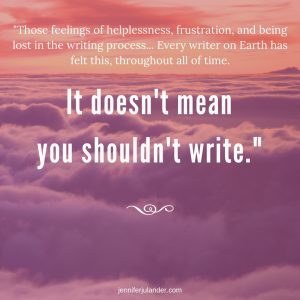
The post How to Find Time to Write in Your Busy Life appeared first on Jennifer Julander.
July 8, 2018
10 Perfect Travel Destintaions for Writing Inspiration
Sometimes we need to go to a specific travel destination for writing inspiration. No matter your writing genre, drawing inspiration from your environment can be very helpful. Many writers get bored with their everyday locations; as a result, it can be helpful to travel to different places around the world to seek inspiration. The right location can help to bring fresh ideas to your mind which can help you to get the words flowing. Here are 10 perfect travel destinations to get new inspiration for your writing.
1. Balmoral Hotel, Edinburgh, UK
 This hotel is gorgeous and has a distinct castle feel to it. However, it is not merely the architecture of the building which makes this destination so inspiring. It is the fact that this is the very same hotel where J.K. Rowling finished the final Harry Potter book, Harry Potter and the Deathly Hallows. The Balmoral Hotel has even turned the room that J.K. Rowling stayed in while she was finishing up the book into the J.K. Rowling Suite. If this hotel worked for J.K. Rowling to craft one of the most successful books of all time, then it could also work for you!
This hotel is gorgeous and has a distinct castle feel to it. However, it is not merely the architecture of the building which makes this destination so inspiring. It is the fact that this is the very same hotel where J.K. Rowling finished the final Harry Potter book, Harry Potter and the Deathly Hallows. The Balmoral Hotel has even turned the room that J.K. Rowling stayed in while she was finishing up the book into the J.K. Rowling Suite. If this hotel worked for J.K. Rowling to craft one of the most successful books of all time, then it could also work for you!
2. Paris, France
 The city of lights, love, and writers. There are plenty of places that boast the influences of great writers, but none so iconic as Paris. This was the home of Hemingway, Gertrude Stein, and Ezra Pound (all at the same time!) It is one of the single most romantic and beautiful places in the entire world. Visit the Eiffel tower and view the city from above, sit at a cafe and write, or walk the streets and allow the city’s charm and romance to inspire you.
The city of lights, love, and writers. There are plenty of places that boast the influences of great writers, but none so iconic as Paris. This was the home of Hemingway, Gertrude Stein, and Ezra Pound (all at the same time!) It is one of the single most romantic and beautiful places in the entire world. Visit the Eiffel tower and view the city from above, sit at a cafe and write, or walk the streets and allow the city’s charm and romance to inspire you.
If you’re writing romance, you can also visit the famous Pont des Arts bridge, which is where lovers have placed locks onto the railings and thrown the keys into the Seine as a symbol of committed love for years. The city is full of inspiration and is a great place to visit to help you with the love aspects of your novel. Who knows? Maybe you’ll be so inspired, you end up writing one of the great upcoming bestsellers of the year.
3. San Francisco, USA
 San Francisco is another beautiful city, like Paris, which many writers and creative professionals find inspirational. Some of the best writers in history have done some of their best work in this city. Both Allen Ginsberg and Jack Kerouac used to frequent local bookstores and cafes in the city. Jack Kerouac even has a street named after him in San Francisco. This street is called Jack Kerouac Alley. A number of well-known bands have also come from San Francisco including the Grateful Dead and Third Eye Blind. Further, the San Francisco Bay area is home to many tech companies whose innovation and creativity has dramatically changed the world. Being near these companies alone can be enough to make you feel inspired. If you are stuck at some point while trying to write your best urban fantasy series, then you may just be able to get past a recent bout of writer’s block if you go to San Francisco.
San Francisco is another beautiful city, like Paris, which many writers and creative professionals find inspirational. Some of the best writers in history have done some of their best work in this city. Both Allen Ginsberg and Jack Kerouac used to frequent local bookstores and cafes in the city. Jack Kerouac even has a street named after him in San Francisco. This street is called Jack Kerouac Alley. A number of well-known bands have also come from San Francisco including the Grateful Dead and Third Eye Blind. Further, the San Francisco Bay area is home to many tech companies whose innovation and creativity has dramatically changed the world. Being near these companies alone can be enough to make you feel inspired. If you are stuck at some point while trying to write your best urban fantasy series, then you may just be able to get past a recent bout of writer’s block if you go to San Francisco.
4. Reykjavik, Iceland
 Iceland has some of the most beautiful landscapes in the entire world. Few places on earth are better for drawing inspiration for fantasy novels. If you need ideas for settings or for descriptions of landscapes while trying to write your best high fantasy series, then this is the perfect place to visit. Traveling to Iceland is also cheaper than traveling to many other locations. So, this is a great option if your travel budget is on the lower side. The Icelandic culture is also very interesting. The city of Rekjavik is very beautiful and is a wonderful place to explore. There is no shortage of beauty, mystique, and wonder in Iceland. All of these things can help to draw out creativity. In fact, if you go to Iceland, you may just come up with some of your best ideas yet! It is no surprise that part of the famous Game of Thrones television series was filmed in Iceland.
Iceland has some of the most beautiful landscapes in the entire world. Few places on earth are better for drawing inspiration for fantasy novels. If you need ideas for settings or for descriptions of landscapes while trying to write your best high fantasy series, then this is the perfect place to visit. Traveling to Iceland is also cheaper than traveling to many other locations. So, this is a great option if your travel budget is on the lower side. The Icelandic culture is also very interesting. The city of Rekjavik is very beautiful and is a wonderful place to explore. There is no shortage of beauty, mystique, and wonder in Iceland. All of these things can help to draw out creativity. In fact, if you go to Iceland, you may just come up with some of your best ideas yet! It is no surprise that part of the famous Game of Thrones television series was filmed in Iceland.
5. Istanbul, Turkey
 Istanbul, Turkey is home to one of the most beautiful structures in the entire world, the Hagia Sophia Cathedral. This Cathedral is roughly 1,500 years old, and was built during the reign of Justinian 1, Emperor of Byzantine. This city, which many believe separates the east from the west, is full of interesting buildings, cafes, restaurants, streets, homes, and other things. If you are feeling devoid of inspiration while trying to write best-selling fiction books, then a quick trip to this enchanting city can help you to feel inspired again. If you do end up visiting Istanbul, then you really should make sure that you see the Hagia Sophia. It is spectacular. It is no surprise that Author Dan Brown even used Istanbul as the setting for the pivotal scene in his book, Inferno. Perhaps one of the important scenes for your upcoming bestsellers will also take place in this special city.
Istanbul, Turkey is home to one of the most beautiful structures in the entire world, the Hagia Sophia Cathedral. This Cathedral is roughly 1,500 years old, and was built during the reign of Justinian 1, Emperor of Byzantine. This city, which many believe separates the east from the west, is full of interesting buildings, cafes, restaurants, streets, homes, and other things. If you are feeling devoid of inspiration while trying to write best-selling fiction books, then a quick trip to this enchanting city can help you to feel inspired again. If you do end up visiting Istanbul, then you really should make sure that you see the Hagia Sophia. It is spectacular. It is no surprise that Author Dan Brown even used Istanbul as the setting for the pivotal scene in his book, Inferno. Perhaps one of the important scenes for your upcoming bestsellers will also take place in this special city.
6. Auckland, New Zealand
 New Zealand is another place that is extremely beautiful, and, like Iceland, has served as a setting for a famous fantasy series. Much of the Lord of the Rings trilogy was filmed in New Zealand. This is partly because New Zealand has beautiful forests, hills, rivers, mountains, and other natural landscapes. So, if you are trying to create the best high fantasy series that the world has ever seen, then this may be the perfect setting to provide you with the inspiration that you need. You can even visit some of the settings from the Lord of the Rings movies if you would like to. A walk through the Shire location may be exactly what you need to help you bring out some of your best creativity.
New Zealand is another place that is extremely beautiful, and, like Iceland, has served as a setting for a famous fantasy series. Much of the Lord of the Rings trilogy was filmed in New Zealand. This is partly because New Zealand has beautiful forests, hills, rivers, mountains, and other natural landscapes. So, if you are trying to create the best high fantasy series that the world has ever seen, then this may be the perfect setting to provide you with the inspiration that you need. You can even visit some of the settings from the Lord of the Rings movies if you would like to. A walk through the Shire location may be exactly what you need to help you bring out some of your best creativity.
Prague, Czech Republic
 If you’re a fan of Laini Taylor, you’ll definitely feel the inspirational vibes in Prague. You can even plan your own Daughter of Smoke and Bone tour to feed your inner nerd (yes, Poison Kitchen is a real place).
If you’re a fan of Laini Taylor, you’ll definitely feel the inspirational vibes in Prague. You can even plan your own Daughter of Smoke and Bone tour to feed your inner nerd (yes, Poison Kitchen is a real place).
Even if you haven’t read Laini Taylor (you need to, right now), the gargoyles, side alleys, and gothic architecture give off a mythical vibe that’s sure to get you writing. This would be the perfect location for inspiration if you’re writing a regency romance or urban fantasy, especially if your work-in-progress features castles, magic, or mythological creatures. Check out the Charles Bridge, Old Town, Prague Castle, or the Astronomical Clock. All of these would be fantastic settings to inspire a sense of mystery and intrigue.
New Orleans, USA
 There’s just something about New Orleans. Even the most skeptical of us might believe in voodoo, ghosts, and vampires while walking the streets of New Orleans, even if it’s just for a moment. Get your fortune told, check out the Burbon Street jazz scene, and eat beignets with coffee at the Café du Monde. My personal favorite was the nighttime vampire tour that reveals a rich history of mythology in the city. We even saw the hotel where Interview with the Vampire was filmed (the tour guide was quick to point out that the novel actually names a different, less eye-catching hotel) and visited the site where the legendary casket girls were said to have lived.
There’s just something about New Orleans. Even the most skeptical of us might believe in voodoo, ghosts, and vampires while walking the streets of New Orleans, even if it’s just for a moment. Get your fortune told, check out the Burbon Street jazz scene, and eat beignets with coffee at the Café du Monde. My personal favorite was the nighttime vampire tour that reveals a rich history of mythology in the city. We even saw the hotel where Interview with the Vampire was filmed (the tour guide was quick to point out that the novel actually names a different, less eye-catching hotel) and visited the site where the legendary casket girls were said to have lived.
If vampires and ghosts aren’t your thing, you can still catch the mystical vibes by visiting this historical city. A friend of mine was even inspired to write a novel about a private eye while visiting New Orleans… the possibilities are endless!
9. Tokyo, Japan
 Writers don’t let writers miss out on themed cafes, and Tokyo is known for its unique ability to provide a themed cafe for any interest. From adorable monsters to Alice in Wonderland, robots, or your favorite anime, Tokyo has it all (this Black Butler cafe is on my personal bucket list).
Writers don’t let writers miss out on themed cafes, and Tokyo is known for its unique ability to provide a themed cafe for any interest. From adorable monsters to Alice in Wonderland, robots, or your favorite anime, Tokyo has it all (this Black Butler cafe is on my personal bucket list).
Besides this, Tokyo has some amazing sites and scenery. The wide variety of manga and anime genres are proof that this city feeds the imaginations of every genre writer out there. Japan’s capital is also known for its vibrant literary scene, and even if you don’t speak Japanese, there are plenty of amazing literary sites to inspire any writer.
10. Santorini, Greece
 Santorini, Greece is teeming with color, intrigue, and beauty. One walk through the streets of this city will leave you in awe of how beautiful the world is. Whether you are trying to come up with a setting for the next chapter of your best urban fantasy series or whether you are trying to design a new world altogether for your fiction work, Santorini is sure to help provide the inspiration you need. The waters off of the coast of Santorini are some of the most vivid blues that you will ever see. If your book has any scenes that take place on oceans, then visiting Santorini can help connect you to ocean vibes and get you in the mood to write about the sea. A side benefit of visiting Santorini for inspiration is that it is also a great vacation spot. So, you may be able to hit two birds with one stone by going there!
Santorini, Greece is teeming with color, intrigue, and beauty. One walk through the streets of this city will leave you in awe of how beautiful the world is. Whether you are trying to come up with a setting for the next chapter of your best urban fantasy series or whether you are trying to design a new world altogether for your fiction work, Santorini is sure to help provide the inspiration you need. The waters off of the coast of Santorini are some of the most vivid blues that you will ever see. If your book has any scenes that take place on oceans, then visiting Santorini can help connect you to ocean vibes and get you in the mood to write about the sea. A side benefit of visiting Santorini for inspiration is that it is also a great vacation spot. So, you may be able to hit two birds with one stone by going there!
Whether you are trying to write the best urban fantasy series, the best high fantasy series, or upcoming bestsellers in any genre, traveling to an inspiring location is one of the best ways to generate new ideas for your book. This is exactly the reason why Earnest Hemingway frequently traveled to Havana, Cuba, and why Jack London traveled to the Yukon. When you are in an inspiring environment, it is simply easier to feel inspired.
All of the locations on this list are great for generating inspiration. You really can’t go wrong with any of them. However, each of these locations is better for drawing out different types of inspiration. For example, Paris is probably the best place to draw out inspiration for love stories, Iceland or New Zealand are probably the best places for drawing out inspiration for fantasy, and San Francisco or Istanbul are probably the best places for drawing out inspiration to write the best urban fantasy series of the year.
So, the place you should go to depends largely on the type of book that you are writing. However, you may be able to tell which place is best for you to travel to simply by looking at the pictures on this list. If one of these places resonates with you when you look at its picture, then that place is probably the best one for you to visit. But don’t worry, if you go to the place and do not like it, you can just try another one on the list! Traveling in and of itself can be inspiring too. You may have your next great idea while you are sitting in the train station waiting for your train!
Experiencing Writer’s Block? Sign up below & receive 12 Writer’s Block Hacks You Haven’t Tried ebook for FREE.
Trust me, you won’t see these tips plastered all over the internet. I’ve read just about every writer’s block blog post & social media discussion imaginable, and these are the things that help me most when I’m truly stuck.
First name:
Email:
Get My Copy!
The post 10 Perfect Travel Destintaions for Writing Inspiration appeared first on Jennifer Julander.
July 1, 2018
Writer’s Block? Here are 10 Hacks for Authors
Writer’s block is a problem that has been plaguing writers for millennia. When it strikes, the writer simply hits a wall and cannot come up with any more ideas or cannot find a way to continue writing. Oftentimes, writers who experience writer’s block get extremely stressed out and lose motivation to continue with their work.
Fortunately, there are tried & true methods for defeating this ancient foe. If you’re a writer dealing with writer’s block, here are some great strategies for overcoming this problem.
Go for a walk or a run
 There are multiple reasons why this is a helpful strategy for dealing with writer’s block. First, it gives your mind a quick break from the page and allows you to get some fresh air. Also, when you walk or run, it will get your blood flowing which can be good for rejuvenating your creative spirit. Exercise also helps to boost your endorphins which can help you to feel more positive. Finally, when you get back from your run or walk, you will feel like you have accomplished something. This will inspire you to work harder to overcome the difficult point in your writing that you are at.
There are multiple reasons why this is a helpful strategy for dealing with writer’s block. First, it gives your mind a quick break from the page and allows you to get some fresh air. Also, when you walk or run, it will get your blood flowing which can be good for rejuvenating your creative spirit. Exercise also helps to boost your endorphins which can help you to feel more positive. Finally, when you get back from your run or walk, you will feel like you have accomplished something. This will inspire you to work harder to overcome the difficult point in your writing that you are at.
And who knows? Maybe you’ll see or hear something that sparks your creativity while you’re out!
Listen to some music

When you’re experiencing writer’s block, emotions and creativity can feel completely frozen. Music has a way of freeing emotions and encouraging creativity, and often helps writers tackle the more difficult aspects of writing.
Choose a movie soundtrack that takes place in a world similar to your novel; or, try an album in a music style that embodies the heart and soul of your story or your main character. You can do this while taking a break, or listen while writing to get into a really deep character point-of-view (POV).
Another strategy is not just to turn on music, but to use headphones or earbuds to help tune out the outside world. Personally, even if I’m alone in a hotel room, this helps me feel transported into the world of my book.
Have a conversion with a good friend or close family member
 Whether you are trying to write an Amazon bestseller, or a column for a newspaper, having a conversation with someone close to you can be helpful. This is because expressing yourself vocally can help overcome creative blocks.
Whether you are trying to write an Amazon bestseller, or a column for a newspaper, having a conversation with someone close to you can be helpful. This is because expressing yourself vocally can help overcome creative blocks.
Don’t worry if you don’t have any close friends or family members who are writers. Much like Dr. House’s infamous epiphanies, sometimes simply verbalizing your thoughts about being stuck is enough to make everything come together in your mind.
Also, speaking with someone whom you care about can be restorative. Freely talking and venting your feelings about the story and the process of writing can help unblock creativity and emotional energy.
Read something else

Sometimes, just taking your mind off of your own work and diving into someone else’s world can help light that creative spark. Fiction, in particular, can be particularly helpful. This is because reading fiction is a temporary escape from your own worries and helps you forget about your writer’s block.
Friends and family members can offer good fiction recommendations if you don’t know what to read. Or, if you have some good fiction books to read lying around your home, you can read those (c’mon, we all have books lying around that we haven’t found time to read).
In particular, try to focus on the genre you’re writing in, taking notice of genre techniques.
Drink some coffee or tea
 Is it a coincidence that some of the best writers in history, including Gertrude Stein, Natalie Goldberg, and J.K. Rowling all preferred to write in coffee shops? There seems to be something magical about coffee, tea, and coffee shops for alleviating writer’s block and for fueling creativity; and it’s no secret that caffeine has been shown to improve cognitive function.
Is it a coincidence that some of the best writers in history, including Gertrude Stein, Natalie Goldberg, and J.K. Rowling all preferred to write in coffee shops? There seems to be something magical about coffee, tea, and coffee shops for alleviating writer’s block and for fueling creativity; and it’s no secret that caffeine has been shown to improve cognitive function.
But more than this, there’s something to be said for having a routine that signals to your brain it’s time to write. I attended a panel discussion by Sandra Taylor at the LTUE Writing Symposium, on the topic of Structuring Life to Support Creativity. She illustrated various ways to use physical cues or actions, such as opening a laptop. For example, when the laptop opens, it’s writing time, and everything else gets put to the side until the laptop closes.
The point is to have a routine, whether it’s lighting a candle, grabbing a cup of coffee, or putting on headphones. (For me, it’s a combination of music, coffee, and ambiance). This could be the exact thing that you need to write that next amazing chapter of your novel.
Imagine you’re only writing to one person

This is a strategy that was used by the famous author, John Steinbeck. Steinbeck is well-known for his novels The Grapes of Wrath and Of Mice and Men. Steinbeck used this strategy because he believed that it could be overwhelming to think about writing for a nameless, faceless audience made up of many people. Be sure to imagine your ideal reader; if you write for them, you can’t go wrong!
If thoughts of how your readers will judge your work are a root cause of writer’s block for you, this is a great strategy for letting go of those thoughts. As Gene Amole famously wrote:
“Of course the sunrise doesn’t care if we watch it or not. It will keep on being beautiful even if no one bothers to look. It is not like the tree that falls silently in the woods because there is no ear to hear it. The sunrise makes no demands on our lives. It illuminates and blesses our lives, expecting nothing in return.”
Stop in the middle of a sentence
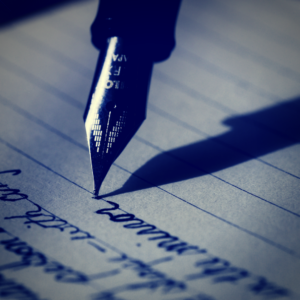 This was a strategy used by Ernest Hemingway. The purpose of doing this is so that the following day, when you begin writing, it will be easier to get started again because there is already a portion of a sentence written, waiting to be completed. This is a rather ingenious way to defeat writer’s block, or to at least keep it further at bay. This technique can work regardless of whether you are trying to write an Amazon bestseller, or a magazine article. It may seem unnatural at first to not finish the last sentence for the day. However, when you wake up the next morning and get to work, you may just find that it is significantly easier to get started with your writing when there is already a half-written sentence waiting for you.
This was a strategy used by Ernest Hemingway. The purpose of doing this is so that the following day, when you begin writing, it will be easier to get started again because there is already a portion of a sentence written, waiting to be completed. This is a rather ingenious way to defeat writer’s block, or to at least keep it further at bay. This technique can work regardless of whether you are trying to write an Amazon bestseller, or a magazine article. It may seem unnatural at first to not finish the last sentence for the day. However, when you wake up the next morning and get to work, you may just find that it is significantly easier to get started with your writing when there is already a half-written sentence waiting for you.
Take a break from media

This means, don’t watch television, don’t go on Facebook, don’t read the newspaper, etc. If your brain gets a break from processing so much information, then it may have more energy to put towards your creative work.
While you are taking a media break, you can do things like laundry, vacuuming, washing the dishes, etc. Just do things that are not mentally taxing and don’t require you to do a lot of thinking. You should spend at least several hours, but don’t over-do it to the point of exhaustion, either. When you return to your work, you may just find that you have a lot more mental energy to put towards your novel, article, etc. This can be a great remedy for writer’s block.
Travel
 Sometimes the best way to get new ideas is to go somewhere new. This doesn’t mean you have to leave the country or even the state. It could be as simple as taking a long drive through the country and stopping at a local coffee shop to do some writing.
Sometimes the best way to get new ideas is to go somewhere new. This doesn’t mean you have to leave the country or even the state. It could be as simple as taking a long drive through the country and stopping at a local coffee shop to do some writing.
However, if you want to leave the country and visit a new city, that’s fine too. Whatever the case, if you are trying to create one of the best fiction books to read this year, getting out of your normal environment may be very helpful for curing your writer’s block. If you live in a city, you could even just take the train out of the city for the day and then take it back home at night. Doing something as simple as this could help you to find a whole new source of inspiration.
Do something else creative

For example, you can take a break and play a musical instrument, paint, attend a dance class, etc. You can even do some sketches of your characters, something that many authors do. This can help your characters to seem more real, and it can make it easier to create storylines for them.
When you tap into other sources of artistic expression, it can help your mind to access different levels of creativity. Ultimately, writer’s block is a temporary deficiency of creativity. So, anything you can do to boost creativity levels can potentially be a cure for writer’s block.
No matter what type of writer you are, you are likely to experience writer’s block at some point. It is simply par for the course for wordsmiths of all types. However, even though this “malady” can be frustrating, it can usually be defeated in a short amount of time. A simple trip to your local coffee shop may be all that is needed to get your creative engine in gear again. Or, perhaps going for a quick run may work well for you.
To find out which is the best cure for writer’s block for you, you will have to do some experimentation. I suggest that you start out with the method on this list that resonates best with you. You should try that and see how it goes. If it works, then great! If not, simply move onto the next one. Keep going until you find a strategy that works very well for you.
Ultimately, the best writers are people who don’t give up, and who finish their works despite many challenges, including writer’s block. It is impossible to be a great writer if you can’t finish a literary work! So, keep going, keep trying, and eventually, you will most likely be able to move past your writer’s block and start churning out the next great section of your book or other work. In fact, if you use these strategies, your work could be finished before you know it!
Have you tried all of these & you’re still stuck? Sign up below & receive 12 Writer’s Block Hacks You Haven’t Tried ebook for FREE.
Trust me, you won’t see these plastered all over the internet. I’ve read just about every writer’s block blog post & social media discussion imaginable, and these are the things that help me most when I’m truly stuck.
First name:
Email:
Get My Copy!
The post Writer’s Block? Here are 10 Hacks for Authors appeared first on Jennifer Julander.
June 4, 2018
10 Best Places to Write Your Next Great Novel
Any author will tell you that when it comes to finding the best places to write, it’s helpful to know which places help you reach your full writing potential. The best writing places can help to inspire you and to bring out your best work. This is true whether you are writing mystery books, fantasy books, sci-fi books, or doing any other type of writing.
So, if your goal is to write one of the best sci-fi books, best fantasy books, or books for any other genre, here are some great ideas for places to write that can help draw out the ever-elusive muse!
Top 10 Best Places to Write
Your Local Library
 There are a number of reasons your local library is one of the best places to write. For starters, it will be peaceful and quiet, an environment that encourages deep concentration, which is so crucial in creating literary works. It can be easier to focus in a library than it can in many other places.
There are a number of reasons your local library is one of the best places to write. For starters, it will be peaceful and quiet, an environment that encourages deep concentration, which is so crucial in creating literary works. It can be easier to focus in a library than it can in many other places.
Besides, what writer doesn’t want to be surrounded by books? (If you’re like me and get distracted by books of your favorite genre, try sitting in another section while you write).
Also, libraries are filled with books that are already published. Simply being around so many books can help to inspire you and to get your creativity flowing. If you have never tried writing at your local library, you should strongly consider it.
Coffee Shops
 Coffee shops are something of a writer’s cliché, but hey, don’t knock it if it works. While it’s certainly not as quiet as a library, they can still be the perfect environment for deep, thoughtful writing. Many coffee shops have comfortable chairs and good tables for writing (bless Starbucks for its consistency).
Coffee shops are something of a writer’s cliché, but hey, don’t knock it if it works. While it’s certainly not as quiet as a library, they can still be the perfect environment for deep, thoughtful writing. Many coffee shops have comfortable chairs and good tables for writing (bless Starbucks for its consistency).
Another great aspect of coffee shop writing is the ability to order coffee, a tea, or a snack periodically to help you stay fueled while you are working.
Some of the best writers in history have created incredible novels at coffee shops. J.K. Rowling is one example of a writer who has a long history of writing at coffee shops. It seemed to work very well for her; in fact, many regularly meet up at coffee shops (perhaps as a not-so-subtle nod to Rowling).
Shopping Malls
 Common advice for writers is to craft realistic characters. A perfect way to get ideas for characters is to simply bring your notebook and your pen, or your laptop to a shopping mall. You can just take a seat on one of the benches or tables that you find, and just do some people watching.
Common advice for writers is to craft realistic characters. A perfect way to get ideas for characters is to simply bring your notebook and your pen, or your laptop to a shopping mall. You can just take a seat on one of the benches or tables that you find, and just do some people watching.
In less than fifteen minutes, you could have some great ideas for new characters.
Even if you’re not trying to create new characters, the mall is still a good place to write. One key benefit of writing at the mall is that you’ll find yourself passing by items that might spark creative thought. Maybe you’ll brainstorm the ideas you need to create one of the best mystery books or other novels you’ve ever written.
Public Parks
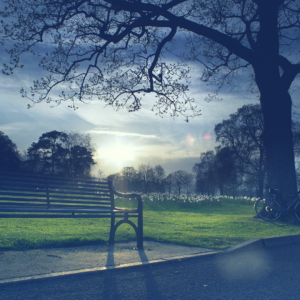 Public parks are another one of the best places to write. This is because they can be very beautiful and tranquil. Sometimes, it can also help to just get outside and get some fresh oxygen.
Public parks are another one of the best places to write. This is because they can be very beautiful and tranquil. Sometimes, it can also help to just get outside and get some fresh oxygen.
Parks also often have fountains, pounds, or other water features which can be refreshing to look at when you need a break from the page. The background noise can be helpful, and you can even pull ideas from your observations of people’s conversations, actions, or the scenery itself.
If you’re planning to write at the park, just make sure it isn’t going to rain!
Hotels
 Many of the best sci-fi books and best fantasy books in history were drafted in hotels. There are several reasons why this is the case. First, hotels allow you to escape for a while and get a fresh perspective.
Many of the best sci-fi books and best fantasy books in history were drafted in hotels. There are several reasons why this is the case. First, hotels allow you to escape for a while and get a fresh perspective.
Second, hotel rooms provide seclusion and encourage you to focus on your work. If you can pick a hotel room with a balcony or a gorgeous view, even better! The option to sit in different places and vary your surroundings can help boost creativity.
Third, hotels have lobbies, which are a great way to change up the scenery if you get restless. Sometimes, lobbies have porches or decks too, which often provide a great view of a city, a town, a forest, a river, a lake, etc. So, a good piece of advice for writers who are having writer’s block, or who just feel they need a change, is to get a hotel room in a new place for a few days (trust me, 3 days max if it’s your first writing retreat), and use the space to really concentrate.
New places often help generate new ideas.
Trains
 Trains are another good place to write. This is because the motion of the train can be very relaxing, as can looking out the window and seeing beautiful landscapes pass by. Also, mystery books and other novels tend to involve journeys of one type or another.
Trains are another good place to write. This is because the motion of the train can be very relaxing, as can looking out the window and seeing beautiful landscapes pass by. Also, mystery books and other novels tend to involve journeys of one type or another.
So, when you take a journey of your own, it can help inspire your plot lines. Further, you can get some great ideas for locations as you travel from one area to another. Another nice thing about writing on a train is that it can help free you from your normal daily distractions. This can help you to get into deep focus mode.
Log Cabins
 Some writers need to go completely off the grid and get away from the internet and television to create their best sci-fi books, best fantasy books, and best other works. This is because the internet, television, and other modern-day technology can be very distracting.
Some writers need to go completely off the grid and get away from the internet and television to create their best sci-fi books, best fantasy books, and best other works. This is because the internet, television, and other modern-day technology can be very distracting.
However, the quiet refuge of a log cabin can help you to get away from the ever-present technology distractions of internet and television. Log cabins can often be rented for a weekend or for a week at very reasonable prices. If you really need to hunker down and focus for a few days to get through a pivotal point in your book, then renting a log cabin is a good way to go.
Coworking Spaces
 Coworking spaces are places where writers, designers, developers, and other self-employed people can come to in order to do their work. Many major cities have such places now, and they are known as one of the best places to write outside of the home.
Coworking spaces are places where writers, designers, developers, and other self-employed people can come to in order to do their work. Many major cities have such places now, and they are known as one of the best places to write outside of the home.
In order to access a coworking space, you usually have to pay a small fee. Often, these spaces provide tea or coffee for free, which helps offset the cost.
A hidden benefit of working in coworking spaces is that you may run into other writers. This can be good for networking. Who knows? You may even be able to get another writer to give you feedback on your work.
Poolside
 Whether you are working on mystery books, or other types of novels, by the pool is a great place to write. Not only can it be refreshing to write by the pool, but you can also take a dip periodically to cool off.
Whether you are working on mystery books, or other types of novels, by the pool is a great place to write. Not only can it be refreshing to write by the pool, but you can also take a dip periodically to cool off.
If you are writing during the summer months, then you can find a great pool to write at if you don’t have one at your house. Many towns have public outdoor pools that are usually inexpensive to get into. So, these pools can be a great option. Who knows, you may be able to create one of your best fantasy novels or best sci-fi novels while you are at the pool this summer.
On the Beach
 Another very relaxing place to work on your novels is at the beach. In fact, the beach may be one of the very best places to write during the warmer months, or if you live in a warmer climate. This is because you can sit in a beach chair, stick your feet in the sand, feel the warmth of the sun on your skin, and just get to work.
Another very relaxing place to work on your novels is at the beach. In fact, the beach may be one of the very best places to write during the warmer months, or if you live in a warmer climate. This is because you can sit in a beach chair, stick your feet in the sand, feel the warmth of the sun on your skin, and just get to work.
The incredibly relaxing setting that the beach provides can help relieve some of the stress that goes along with writing. So, you may find that you have more energy and endurance when it comes to your work while you are at the beach. Also, just like at the pool, you can take a swimming break whenever you need one!
Now it’s up to you. Pick 1-2 of the “best places to write,” or choose your own.
 Writing one of the best mystery books, best sci-fi novels, or best fantasy novels, is not easy. However, if you write in any of these places while you are not working at home, then you may find that the process is easier.
Writing one of the best mystery books, best sci-fi novels, or best fantasy novels, is not easy. However, if you write in any of these places while you are not working at home, then you may find that the process is easier.
Ultimately, you will need to put a lot of hard work and practice in to become a great writer. However, many of the best novels in the world were written at least in part in the ten places listed above. So, these places may be able to help improve your writing process.
If you don’t know which of these ten places is best for you, then you may want to start off just trying one or two of them. If you like them, then you can stay with them. If not, you can easily try out a different place. Just keep going until you find the spot that is right for you. More than likely, at least one of these places will resonate with you, and will work very well to help to bring out the best quality writing you are capable of!
Have your own favorite writing hideaway or an awesome idea for a writing spot we haven’t covered? Tell us in the comments!
The post 10 Best Places to Write Your Next Great Novel appeared first on Jennifer Julander.
February 15, 2018
Best fantasy books of 2017-Readers’ Pick
Particularly the ones that name it one of the “best fantasy books of the year.”
People have said: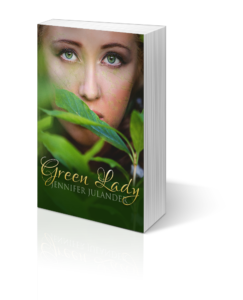
they couldn’t put the book down
they were reminded of their favorite books
it’s one of the best fantasy books they’ve read in a long time
the writing transported them straight into the world of Elodria
I wanted to take a moment to say “Thank You!” to everyone who’s taken the time to leave a review. Currently, Green Lady has a rating of 4.7 stars on Amazon and 4.5 stars on Goodreads!
It makes me so happy to know you’ve enjoyed my story! I gauge success based on the reader’s experience (I don’t necessarily need people to say it’s the best fantasy novel ever), so by this measure, Green Lady has been a huge win.
Also, I’m honored to announce that Green Lady is the recipient of the 2017 New Apple Award for Excellence in Independent Publishing, winner in the Young Adult category.
Have the “world’s best fantasy books” had an influence on Green Lady?
People ask me this all the time, but I still have a difficult time answering.
I mean, if you asked me to list the best fantasy books of all time, we’d be here all day. But I’d like to think my writing carries the influence of many of the greats, ranging from authors like Tolkein and Rowling (I really admire her foreshadowing) and poets like Kenneth Koch.
Some of the reviews I copied and pasted below actually name a few writers. Apparently, my writing reminds readers of a variety of fantasy authors. I have to give another big “Thank You!” to these reviewers.
Having my debut novel called one of the best fantasy books is a bigger compliment than I probably deserve, and I’m truly humbled by these comments.
The writing in Curse of Brys is already better than anything I’ve ever written (no, I don’t have favorites…! Every book is my baby!) and I’m really looking forward to surprising everyone with the sequel.
Why readers say Green Lady is one of the best fantasy books of the year:
fly2fast
In the Spirit of CS Lewis and the Chronicles of Narnia

October 3, 2017
Green Lady is an incredible work of fiction that will inevitably be brought to many people’s attention in the weeks and months to come. I cannot help but think while I was reading the pages, of all of the work it took to keep all of the facts accurate while building each characters profile and using a vocabulary that was very rich and wonderful.
This is the best work of fiction that I have read in many years, and my hat goes off to Jennifer Julander for doing such an incredibly wonderful job. This is a major book, and a work like this takes a lot of time and concentration. It is Rich, passionate, thrilling, romantic, scary at times, very visionary and challenges the reader to keep it straight while being on guard for something that could happen around the corner. I keep sensing something is going to happen, and I wanted to know what it was but also didn’t want to know… it scared me some.
…The Chronicles of Narnia has 85 million books in print, and to think that a theologian wrote this great work of fiction. I say this as I believe that it helps for a writer of this type of work to have a deep spiritual connection…
I personally enjoyed the vocabulary, the poetic prose that she experimented with, and the rhythm that the book begins to take as you meander down the paths through the pages.
Tara Schnetz
 I couldn’t put it down!
I couldn’t put it down!September 30, 2017
What an intriguing story. I love the way the author writes each story in sections from every character’s point of view. It is fascinating to follow journey so well described for us.
For me the book was almost impossible to put down. The book gets you hooked early on making the entire story exciting.
If you are me, you’re heart pounds just when theirs do and you can feel yourself moving through the trees with Cleandra. The story takes you deep into the minds of each character leaving just enough mystery to cause you to turn the page eagerly!
You are wondering what choice will they make now what will become of this family, the forest, the magic and the unpredictable, deadly wolf!
Kendall T.
 Best book I have read all year!
Best book I have read all year!September 28, 2017
Green Lady kept my attention from the first sentence to the last. The descriptive writing style reminded me of The Last of the Mohicans, which I recently read. It really paints a picture in your mind as you read, and the characters are intriguing and full of depth. I often found myself starting to read faster to see what happens next, but then told myself to slow down and enjoy the brilliant writing. A great book for TEENS and adults. I plan to buy this for my nieces and nephew for Christmas gifts. Definitely the best book I have read all year! Congrats to Jennifer on a fantastic first seller and I look forward to reading the sequel and future titles.
One reviewer even compares Green Lady to Juliet Marillier.

You guys, I  this comparison! Once, a friend told me the same thing, but it’s different to hear it from a complete stranger.
this comparison! Once, a friend told me the same thing, but it’s different to hear it from a complete stranger.
Andrea R.L.
 The next Juliet Marillier
The next Juliet MarillierSeptember 29, 2017
Jennifer Julander is an amazing writer. She can bring to life the reality of her book, described everything clearly, and the characters are full of depth. The story draws you in from the very first chapter. I have loved reading this book. I believe she is the next Juliet Marillier!
Hanna
 Green Lady is one of the best novels I’ve read in a long time
Green Lady is one of the best novels I’ve read in a long timeMay 24, 2017
Green Lady is one of the [best fantasy books] I’ve read in a long time. I absolutely loved Jennifer Julander’s fresh take on an well-written topic. Especially her non-traditional personalities of magical creatures and lands. Seahorses that aren’t so cute and friendly as one might expect and a “forest” in the desert. A great first work from a new author, I can’t wait to see what Jennifer Julander writes next as she is definitely a new favorite.
Green Lady is a wonderful novel about a young woman who discovers her closeness to nature is more than just a passion for the outdoors. Her innate abilities awaken at the same time a dark presence is vying for power. Elemental magic, shapeshifters, hidden magical realms, and a mysterious albino man are a perfect combination in this magical adventure. This story whisked me away to a magical land and dropped me right into an adventure so exciting that I couldn’t put the book down. It made me wish I didn’t have work the next day; I wished I could stay up late reading by the light of a book lamp like I did when I was young.
The magic world of Green Lady is reminiscent of Tolkien’s Middle Earth, CS Lewis’s Narnia, JK Rowling’s Harry Potter and has an Avatar: The Last Air Bender vibe. It’s a perfect read for teenagers exploring fantasy worlds for the first time, and young adults who grew up reading Harry Potter and Hunger Games.
Here’s a couple from Goodreads that made me smile…
 Sep 29, 2017
Sep 29, 2017Chelsea rated it
Shelves: favorites-thus-far
It’s hard not to love the way that Julander writes. The pictures she paints with words are exquisite and imaginative. I was captivated from the very start… talk about being sucked into a story! lol
The female characters in Green Lady are strong minded and powerful and keep your attention with their inner dialogue and thoughts. I can almost see the look of adventure or even mischief in their eyes while reading! I’m super all about strong female characters and she nails it. I’m super excited to read more from this inventive author.
 Sep 27, 2017
Sep 27, 2017Melanie Noyc e rated it
It has been so refreshing to get lost in a book again, and green lady has done that for me. With school and a 5 month old, it is nice to remember to take time for myself and enjoy a tale full of adventure and fantasy. HIghly recommended.
Not all of my reviews are raving, and that’s okay, too.
A couple reviewers, like the one below, didn’t like how frequently I changed between character perspectives:
Shemeka Mitchell
 Imaginative
ImaginativeNovember 10, 2017
The author of this book has an amazing imagination! I really like the concept of the book but it was sort of hard to follow. There was a lot of jumping back and forth. I found myself having to go back to see who’s POV it was. The writing was good. I didn’t really notice any errors. And I could, easily, visualize this book as a movie.
I can hardly take “Imaginative” as an insult…
Her review makes a good point. Two other reviewers agreed with her, and part of me can’t help but wonder if it’s a genre preference? (Fantasy readers seem to enjoy point-of-view shifts more than literary fiction readers).
Regardless, deep point-of-view is something I’m more conscious of in Curse of Brys. I want to cultivate an immersive experience for the reader. After all, poetry can only be an “imitation of nature.” The truest poem is the object itself.
(I have a long article on the nature of poetry that elaborates on this idea).
Also, Curse of Brys would end up being 5,000 pages if I wrote in five different perspectives this time!
Do these reviews make you want to read one of 2017’s best fantasy books?
If so, you can grab a copy of Green Lady here.
Meanwhile, I’m over here finishing Curse of Brys (people won’t leave me alone until I do… haha!) and racking up my count of “best fantasy books” written.
I hope every one of my books will make the cut, because it’s my goal to give you guys the types of experiences I love to read myself.
(Do you ever lament that there aren’t enough of your favorite types of stories? What do you crave when it comes to reading? Comment below!)
If you’re anxious to see what’s next in the world of Elodria, you can check out some sneak peek scenes and artwork from Curse of Brys. Sign up for book updates here.
Thanks again for all the kind words, everyone!
The post Best fantasy books of 2017-Readers’ Pick appeared first on Jennifer Julander.
June 27, 2017
Inside Look: Dark Historical-Fantasy Novel, Damastor
Coming soon: dark fantasy book reviews for the novels, Damastor and Fae-The Wild Hunt.
After reviewing dark fantasy novelist, Graham Austin-King, my next mission was interviewing Dimitri Iatrou, author of Damastor. Both of these authors have been on my dark fantasy reading list for a little while now.
Meet dark historical-fantasy indie author, Dimitri Iatrou, who “wrote Damastor like no one else was going to read it.” By far, this was the best advice I learned in my creative writing classes. I remember talking about how it doesn’t matter if we think the sunset’s beautiful; the sun rises no matter who’s watching. By nature (pun intended), the sunset is almost always spectacular, and in theory, that’s because onlookers don’t influence the sun’s behavior. (This conversation was spurred by something Hemingway, I think).
The general sentiment has always stayed with me: Write as if no one will read it. You don’t need an audience to be spectacular.
Note: I’m currently in the midst of reading Damastor and I can attest that there are no spoilers in our interview.
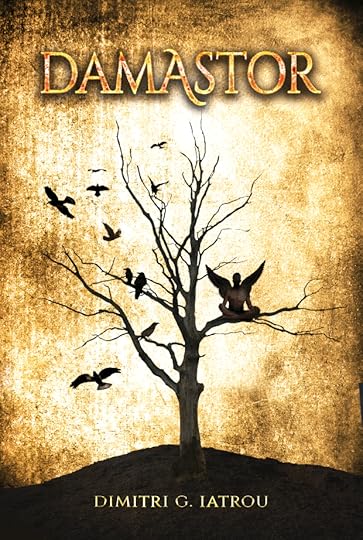
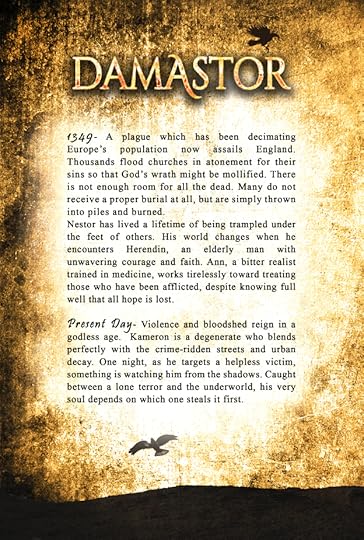

JJ: “What was your biggest inspiration for the dark historical-fantasy novel, Damastor? How does the initial concept/draft vary from the final product?”
D: “For ten years my characters spoke to me, visited me, and helped me create a story about death, suffering, forgiveness, and renewal. My biggest inspiration for writing my novel was just curiousity where the ebb and flow of my journey would take me. I had never written anything before, save for diary entries; however, Damastor surprised me, in that I learned a lot about myself- my demons, my faith, my fears, and ultimately my love for this craft.
“Initially, Damastor was going to be called ‘Guardian.’ He was still an angel, but he had no M.O. He was just going to begin stalking bad guys one day, and Kameron was going to be his first victim. There was to be no back and forth from present to past, no severity of the Black Death. That idea came afterward when I realized that my story had no soul. Damastor was originally going to be a comic book, but after three pages, I decided to throw my hat in the literary world.”
JJ: “Wow, a comic book? Do you have an early drawing you’d like to share? I think it’d be interesting to see.”
D: “Unfortunately, I threw away those drawings a long time ago when I realized that a comic wasn’t the way to go. I really regret that now.”
JJ: “Darn, I know I’ve done that before, too. So, do you take after a certain character the most, or does a certain character take after you?”
D: “Each of my characters possesses an exaggerated facet of one of my emotions. At times I feel like Nestor- embarrassed, mortified and naked in front of everyone who reads my work. The Herendin in me pops out when I’m feeling especially happy and optimistic about where life is taking me. Ann is my logical, and at times pessimistic side, which doubts humanity. And Kameron is my fear of failure, of letting my loved ones down.”
JJ: “I think that’s true of a lot of my characters, too. If you were living in this story, what would you do there?”
D: “If I were in this story, I’d probably be like Nestor, alone, running for the hills, trying to keep under the radar so God doesn’t notice me and strike me where I stand.”
JJ: “There are some interesting religious themes in Damastor, to be sure.”
D: “The most interesting part of my novel was that I was not going to give God a name. I simply called Him ‘The Light.’ He was non-denominational. I didn’t want to upset anyone- that is, until I had an impromptu run-in with Jesus on Friday, December 21st, 2012 and I was changed completely. (I wrote a testimony online as well) I immediately revisited my manuscript and added Jesus’ name wherever I could. I didn’t care if I was preachy and didn’t care if people hated my work. I decided I would welcome the controversy if there was going to be any. So Kemeron’s confusion when he came to the realization that we are indeed fighting a spiritual war was completely authentic and mirrored my thoughts and emotions exactly regarding my religious experience.
“My characters in Damastor no longer talk to me. They stopped doing that as soon as I let them loose on the world. It was like losing a best friend. However, I’m sure they’ll come around again if I decide to write a sequel.”
I, for one, hope that Mr. Iatrou decides to write a sequel. It’s rare to find an author who can delve so deeply into issues of the human soul, and who can segregate his own emotions into individual characters. (What a promising start for this dark historical-fantasy indie author!)
You can find Damastor on Amazon, currently free on Kindle Unlimited.
Don't forget!
Invite your friends to follow JJ’s blog & get extra entries to the drawing to win free books for 1 year on July 31, 2017.
For each friend that accepts your invite, you’ll receive 1 extra entry to the drawing.
Increase My Chances to Win!
The post Inside Look: Dark Historical-Fantasy Novel, Damastor appeared first on Jennifer Julander.



